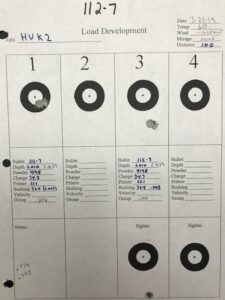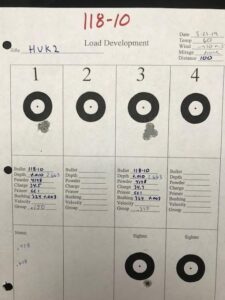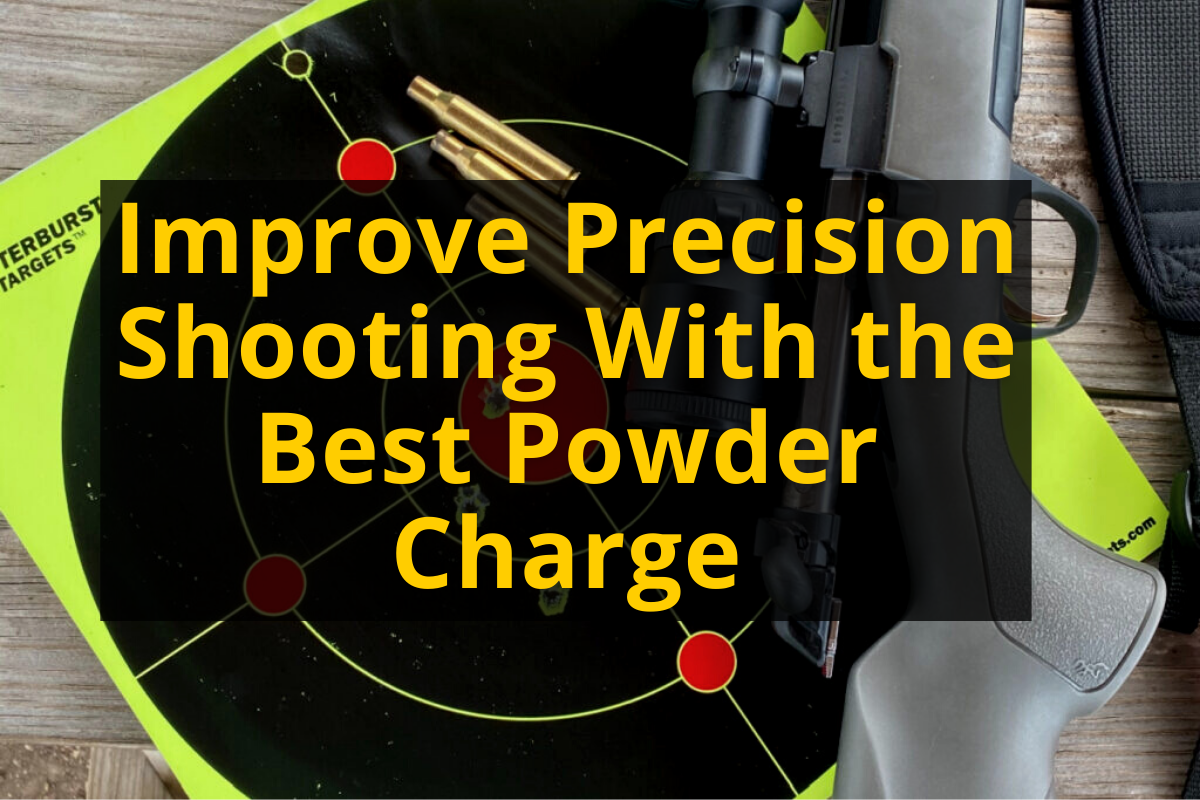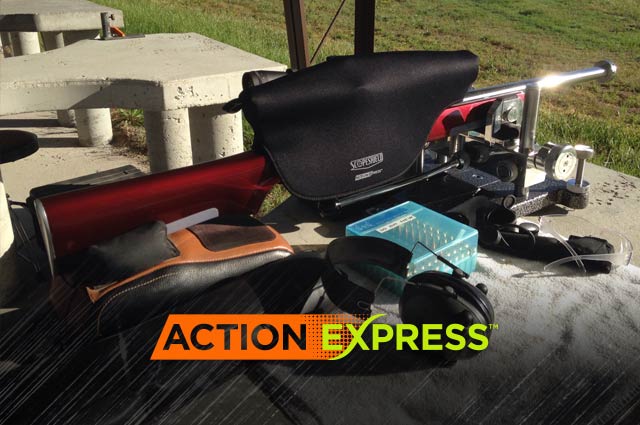In the last blog of this series, Jason Stanley, National Benchrest Champion, discussed how he uses a load ladder to begin tuning a rifle barrel. In this post, Jason begins to develop a trend for the best powder charge for his rifle. Additionally, he speaks about the challenge of having the right weather for precision shooting.
[bctt tweet=”PrecisionShooting” username=”scopeshield”]
Changing the Powder Charge Variable
I loaded two different powder charges for each bullet while loading for my load ladder. I loaded three rounds of 34.5 gr. and three for 34.7 gr. Again, I am only changing one variable. The powder charge is the only variable I am changing. I kept the CCI BR4 primers, had a seating depth of +.010”, and the .324 bushing. From experience, I know the load should be somewhere in the 34’s and I just wanted to have another piece of information to let me know if I should go above or below 34.5 gr. Based only on the load ladder, I would not know which way to go. If the 34.7 gr. shot better than the 34.5 gr. that is an indication that I should go higher or vice versa.

112-7 Group Target 1: Variable = Powder Charge

118-10 Group Target 1: Variable = Powder Charge
As you can see from the above pictures, the 112 again shot better as a whole. That is the third piece of information that confirms that the barrel likes the 112-7 over the 118-10. Also, you can see on the 112-7 target that the 34.7 gr. shot better (Target #3 = .100” group) than the 34.5 gr. (target # 1 = .206” group). Based on the 112 load ladder information and this group target, I am going to keep the same primer and seating depth but try 34.6, 34.7, and 34.8 gr of H4198 the next time out. Remember, I am looking for the tune window. For precision shooting, I want to find the ranges of powder that this bullet will shoot in, then go right in the middle.
Developing a Trend
I am also going to try two more groups with the 118-10. Since the 34.5 gr. shot better (Target # 1 = .150” group) in the 118 than the 34.7 gr. (Target # 3 = .310” group), I want to try something lower just to see what happens. My seating stem is already set up for the 118-10’s so it really does not take very much time to load and test these. Once I have those loaded, I will adjust my seating stem for the 112-7.
It would be easy to make a decision to go with the 112-7 seated at depth of +.010 with a .324 bushing set off with a charge of 34.7 gr of H4198 because of the .100” group. Shooting an almost zero group is pretty sweet. However, at this point in time, I think that would be a mistake. One three shot group is not enough information to “hang my hat” on that load. However, the trend is starting to develop for the 112-7 and a charge higher than 34.5 gr.
Looking for the Right Weather to Test Loads
Range Day 2: 3-31-19 = 55 oF. 5 mph switchy winds, sunny, horrible mirage.
I went out to the range and got everything set up. When I looked through the scope, it was like looking through a fish bowl. I could barely pick out the dot to aim at and it was not standing still. I know from experience this was not a good day to test loads. I packed up my stuff and went home without even firing a shot.
Range Day 3: 4-2-19 = 63 oF. 0-5 mph wind, sunny, some mirage.
Another day after work of going to the range. The temperature was warm enough to give me some reasonably close data. Most of the tournaments are in the late spring, early summer and early fall. Temperatures those times of year can vary from 50 oF to 95 oF, therefore I want to tune my barrel in temperatures that are close to that. There was a slight wind (which is good) but decent mirage. Nothing close to the last time I went out, but still enough for me to hold off shooting until early evening.
When I noticed the mirage die down so did the wind, the tails on my flags were just hanging straight down. I believe that having zero wind is the second worst time to tune a barrel. (The first would be heavy mirage). Having no wind is when all the “gremlins” come out. “Gremlins” are the little puffs of wind that we do not notice, and the mirage that is really tough to pick up, bottom line: Bad JuJu. Sometimes you shoot some really good groups and other times they are horrible. The data on these zero condition days is not reliable. As stated earlier, unreliable data is worse than no data at all. A little bit of wind is a good thing because it evens things out.
Practicing Precision Shooting
The smart thing would have been to load everything back up and go home. Did I do that? Nope. I was kind of ticked off that this was the second time I hauled everything out, got everything set up, and did not get a chance to shoot. So, I decided to practice. My goal was just to shoot like normal, but really focus on not looking at my loading block when reloading and just watching the flags after the shot. A side note; even though this data is not reliable and therefore I do not count it towards finding my tune, the 112-7 with 34.7 again shot the best with a .118” group.
Was it a complete waste of time? No, not really. I did get some good practice in. In hindsight, I should have went fishing. I heard the crappies were biting.
In the next blog of this series, Jason Stanley establishes the powder charge tuning window and confirms the best bullet for his rifle barrel. For an overview of this series on precision shooting, check out our first post on Tuning a Rifle Barrel.





